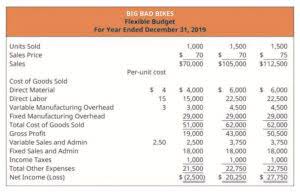
At the product level In a manufacturing company, variable costs change, depending on the volume of production. As more units are produced, total variable costs for the product increase. Contribution margin (sales revenue minus variable costs) is used to evaluate, add and remove products from a company’s product line and make pricing and sales decisions.

Get instant access to video lessons taught by experienced investment bankers. Learn financial statement modeling, DCF, M&A, LBO, Comps and Excel shortcuts. Take your learning and productivity to the next level with our Premium Templates. If you’d prefer a Card with no annual fee, rewards or other features, an alternative option is available – the Business Basic Card.
Sample Calculation of Contribution Margin
The contribution margin is the difference between total sales revenue and the variable cost of producing a given level of output. As mentioned above, contribution margin refers to the difference between sales revenue and variable costs of producing goods or services. This resulting margin indicates the amount of money available with your business to pay for its fixed expenses and earn profit.
- Net operating income will also increase by 40 cents, assuming that fixed cost do not change.
- While contribution margin is expressed in a dollar amount, the contribution margin ratio is the value of a company’s sales minus its variable costs, expressed as a percentage of sales.
- Instead, they leave this number to their accountants and bookkeepers.
- Some managers prefer to work with the contribution margin ratio rather than the unitcontribution margin.
- The interesting thing about contribution margin ratio is that you can perform the calculation anytime to achieve a unique view into your business.
- Analysts calculate the contribution margin by first finding the variable cost per unit sold and subtracting it from the selling price per unit.
You need to calculate the contribution margin to understand whether your business can cover its fixed cost. Also, it is important to calculate the contribution margin to know the price at which you need to sell your goods and services to earn profits. That is, fixed costs remain unaffected even if there is no production during a particular period. Fixed costs are used in the break even analysis to determine the price and the level of production. Contribution margin is used to plan the overall cost and selling price for your products. Further, it also helps in determining profit generated through selling your products.
Business Class
Sales revenue refers to the total income your business generates as a result of selling goods or services. Furthermore, sales revenue can be categorized into gross and net sales revenue. Direct Costs are the costs that can be directly identified or allocated to your products. For instance, direct material cost and direct labor cost are the costs that can be directly allocated with producing your goods.

The following are the steps to calculate the contribution margin for your business. And to understand each of the steps, let’s consider the above-mentioned Dobson example. Should the product be viewed as more of a “loss leader” or a “marketing” expense?
What Is a Good Contribution Margin Ratio?
Gross margin is shown on the income statement as revenues minus cost of goods sold (COGS), which includes both variable and allocated fixed overhead costs. Profit is gross margin minus the remaining expenses, aka net income. The overall contribution margin is computed using total sales and service revenue minus total variable costs. Fixed costs are expenses incurred that do not fluctuate when there are changes in the production volume or services produced. These are costs that are independent of the business operations and which cannot be avoided.
- Barton adds that contribution margin can support you in determining the lowest possible price at which sales can be made while still breaking even.
- Gross margin is calculated before you deduct operating expenses shown in the income statement to reach operating income.
- After variable costs of a product are covered by sales, contribution margin begins to cover fixed costs.
- Contribution margin is a product’s price minus its variable costs, resulting in the incremental profit earned for each unit sold.
- When a company is deciding on the price of selling a product, contribution margin is frequently used as a reference for analysis.
- We’ll start with a simplified profit and loss statement for Company A.
Because to really understand your business, you have to control your contribution margin ratio. You can use a spreadsheet, such as Google Sheets or Microsoft Excel, to include columns by product, enabling you to compare the contribution margin for each of your business products. This ratio is extensively used cm ratio formula in cost volume profit calculations. To resolve bottlenecks, contribution margin can be used to decide which products offered by the business are more profitable and, therefore, more advantageous to produce, given limited resources. Preference is given to products that provide a high contribution margin.


